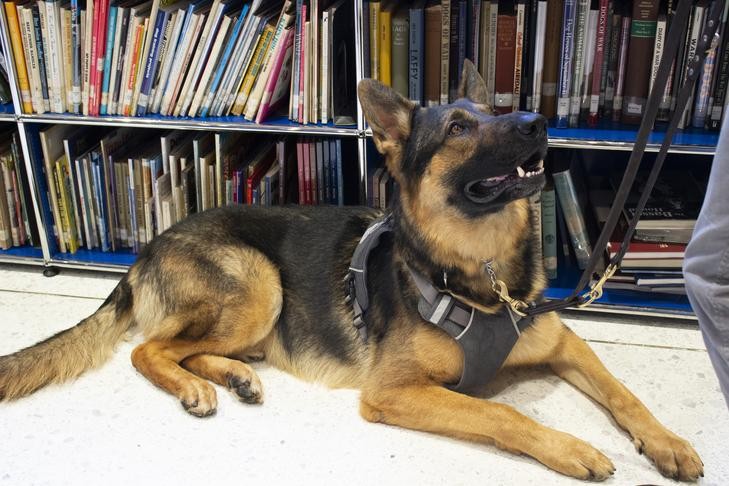Guide dogs are incredible service animals that provide invaluable assistance to individuals with visual impairments. You’ve likely encountered them, but might not fully grasp the dedication and meticulous process behind their selection and training. Let’s delve into the essential aspects of these extraordinary canines.
The Careful Pairing of Guide Dogs and Handlers
The placement of a guide dog is a highly individualized process. Nonprofit organizations meticulously consider various factors, from a person’s lifestyle and hobbies to their family dynamics, activity level, living arrangements, and even other pets in the household.
Lorri Bernson, Media and Community Liaison at Guide Dogs of America, emphasizes this tailored approach: “Do you have kids? Do you have other animals in your house? All of that goes into account of whether the dog will work for the person, and if the dog will be happy, as well. The dogs are personally chosen for specific people.” This careful consideration ensures a harmonious and effective partnership.
The Ongoing Bonding Process
A strong bond is crucial for a successful guide dog team. This bond develops through extensive training and shared experiences. Organizations often facilitate this process through on-site training, where dogs and handlers learn to work together under the guidance of professionals.
Michelle Barlak, Senior Associate of Public Relations at The Seeing Eye, highlights the importance of this connection: “Many people believe that anyone can pick up the harness, and the dog will just guide them. In truth, the dog must bond with his owner, and they must form a relationship. The dogs work for their owner’s praise and affection.”
Common Guide Dog Breeds
While various breeds can possess the necessary traits, some are more commonly selected for guide dog work due to their temperament, trainability, and overall suitability.
German Shepherds, Labrador Retrievers, and Golden Retrievers are among the most frequently used breeds. Standard Poodles are also sometimes chosen, particularly for individuals with allergies.
Guide dog trainers carefully consider a breed’s characteristics when matching dogs with handlers, often pairing more active breeds with more active individuals. The ultimate goal is a team that complements each other’s needs and abilities. As Bernson from Guide Dogs of America explains, “For a successful team to work out, it is really a lot about the bond between the dog and the human handler.”
Early Training and Socialization
The journey of a guide dog begins in puppyhood. Training and socialization are crucial from a young age and continue throughout the dog’s life. Many guide dog organizations have their own breeding programs. At around eight weeks old, puppies are placed with puppy raisers who socialize them and teach basic obedience.
Between 12 and 18 months, the dogs return to the organization for formal guide dog training with professional instructors. This intensive training can last for several months as the dogs progress through different levels before being paired with a handler.
Handler Direction and Intelligent Disobedience
Guide dogs are not autonomous navigation systems. They rely on directional cues from their handlers and are trained to intelligently disobey commands if the situation is unsafe.
Barlak from The Seeing Eye explains, “Seeing Eye dogs are not like using a GPS. The dog’s job is to look out for hazards and obstacles that the blind person cannot detect, such as a blocked path or an overhead obstruction.” She further clarifies, “Many people also believe that Seeing Eye dogs can read traffic lights. It’s actually the person’s responsibility to listen to the flow of traffic and give the dog a command to cross when it sounds safe. This is where the decision-making ability of the dog factors in. The dog must decide if it is safe to cross, and the owner must trust the dog.”
Respecting Working Guide Dogs
It’s crucial to remember that guide dogs are working animals when they are wearing their harnesses. While they may be friendly, it’s important to resist the urge to pet them, as this can distract them from their important task.
Bernson emphasizes this point: “[Many people don’t know] not to pet guide dogs while they are in a harness, but they are working and it could distract them from their job.”
The Life-Changing Impact of Guide Dogs
Guide dogs provide independence, mobility, and companionship to their handlers. They offer a sense of freedom that a cane cannot provide.
Jen Armbruster, a gold medal Paralympian who has used multiple guide dogs since becoming totally blind at age 17, poignantly describes the experience: “It’s just such a feeling of freedom and independence. Using the cane was a reality check for me of how much freedom that dog gave me.” In essence, guide dogs are not just animals; they are partners who transform lives.
